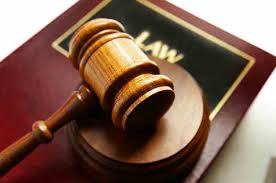Who Is Responsible For Damages And Injuries In a Truck Accident?
When an individual is involved in a car accident involving a semi-truck, chances are they want some compensation for the crash. If a person can prove that the truck driver, along with the company that employs him, were negligent, then they may be able to recover damages against the truck driver and their employer.
However, it’s important to remember that just because a truck rolls, skids, stops suddenly or jackknifes, they are not automatically negligible or liable for the accident. In these cases, the driver may not be at fault for various reasons, including road conditions, which is a common cause of accidents involving trucks and cars.
Another reason could be other cars on the road causing the truck driver to swerve or stop suddenly to avoid the vehicle. Finally, the truck skidding, jack knifing or rolling could be the cause of an inherent problem with the truck. When it comes to these situations, the truck driver is not at fault, but an investigation could be still be made, as it’s possible that the employer or manufacturer is to blame, as they neglected to maintain the truck or they manufactured or installed faulty parts. 
The driver is most likely to be at fault in cases where there were situations involved such as driver fatigue, speeding, driving under the influence or in-cab distractions. The company and the truck driver may share fault in most cases where they employed an inexperienced truck driver, or the cargo was poorly loaded.
In order to increase the chances of winning a settlement when involved in a truck accident, your best strategy may not be to proceed against the truck driver. There are other potential parties involved, including the trucking company, the manufacturer of the truck, or a public entity such as a city, state or county responsible for being neglectful of road designs or conditions.
Factors To Help Determine Fault
To prove that the truck driver or a third party was responsible for the trucking accident, evidence will be needed to show they were at fault.
Such proof can be the any of the following:
● Accident photographs: Photographs can include all involved vehicles, traffic signs, road conditions and sustained injuries. After your accident, it’s best if you document the entire scene.
● Eyewitness testimony: If any bystanders or other drivers saw the accident unfold, take note of their statements and get their personal information, so they can be contacted at a later date if their testimony is required.
● Police report: Calling the police after an accident is vital, as an official police report is relevant evidence.
The above evidence may not be enough to prove fault beyond a reasonable doubt, but it can show that you were not the party responsible for the accident.
Understand Your Rights
Understanding and knowing your rights can be helpful in knowing how to move forward if you disagree with the fault ruling of the accident, or if you are deemed liable for damages but you are in disagreement with this statement.
It’s also important that you are aware of the statute of limitations of the accident in the state where the wreck took place, so you can file your claim as quickly as possible before time runs out. If your claim is not ruled in your favor, you may have the right to an appeal. 
Contact An Experienced Personal Injury Attorney
If you have been involved in an accident with a truck, you should contact an attorney that specializes in personal injury. They can advise you of your rights and help you determine whether there is sufficient evidence to file a claim, and which defendants the claim should be filed against.
